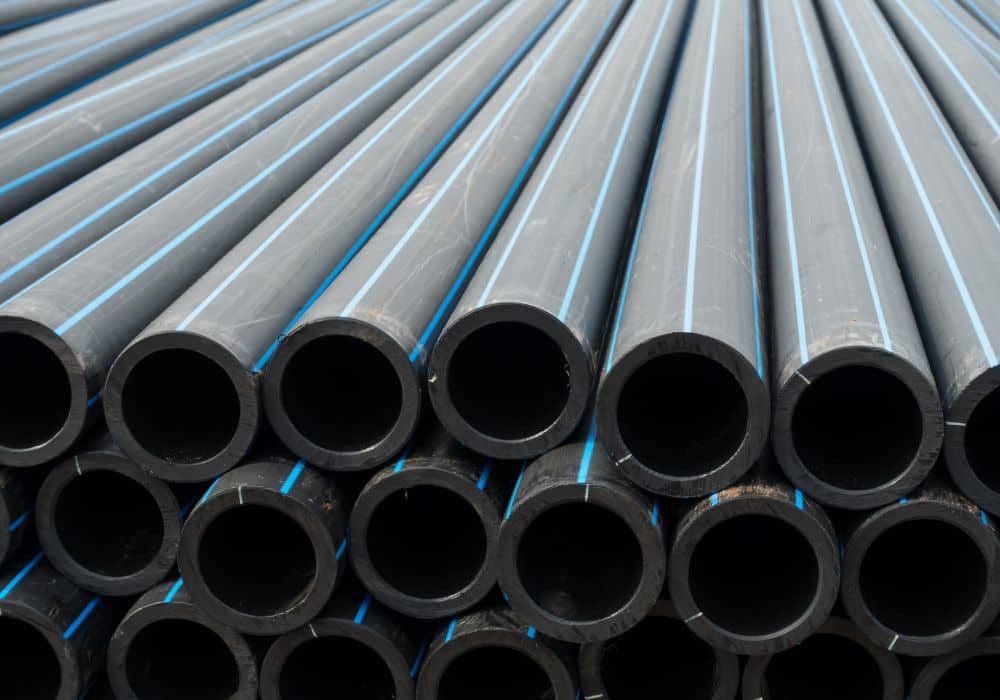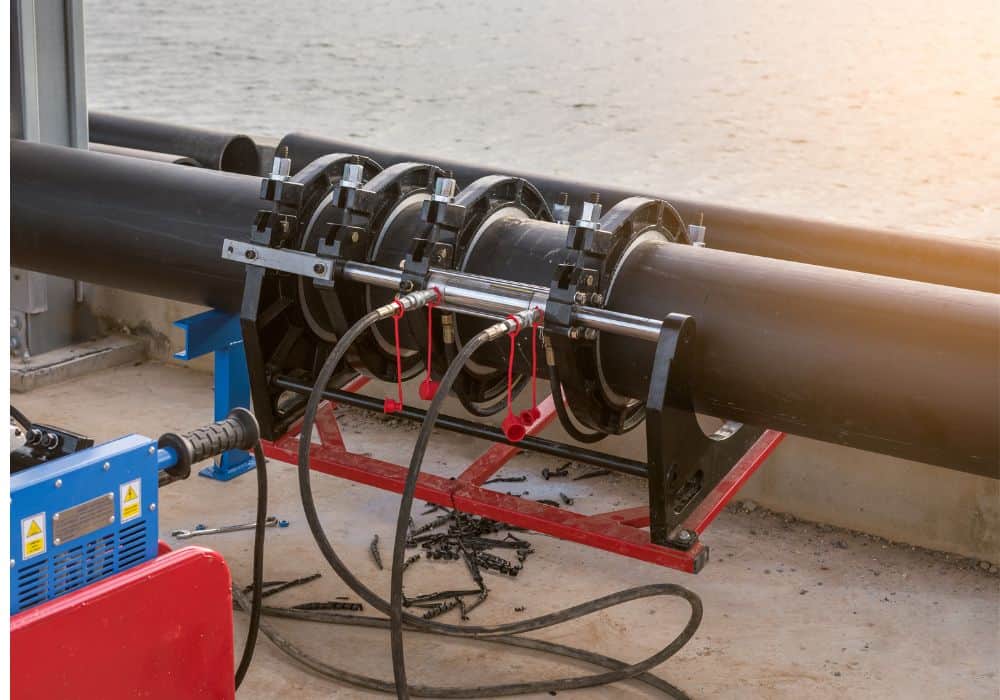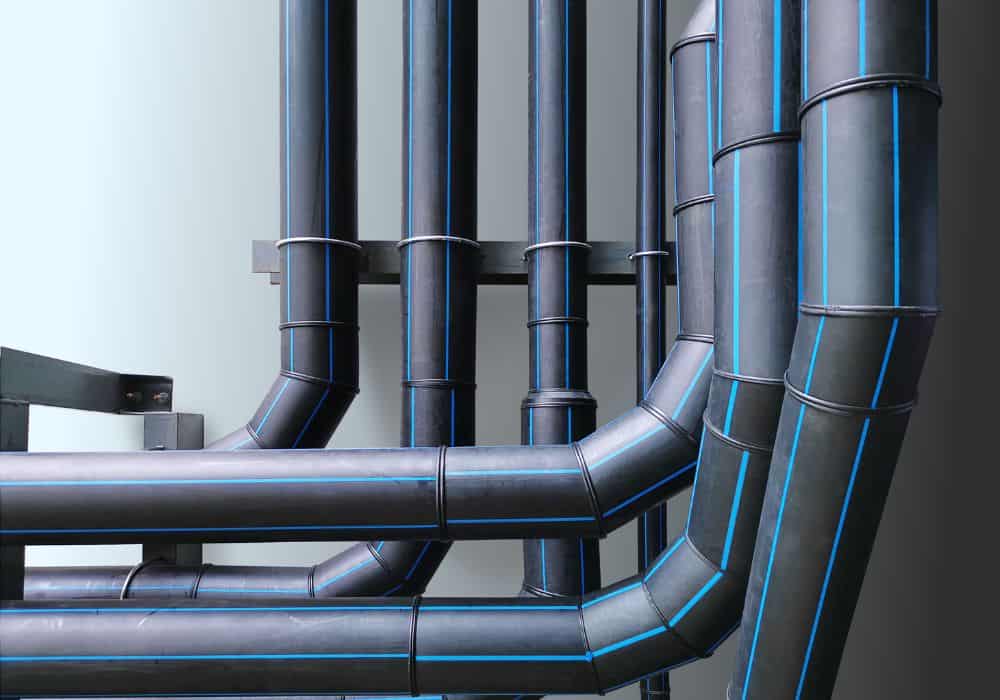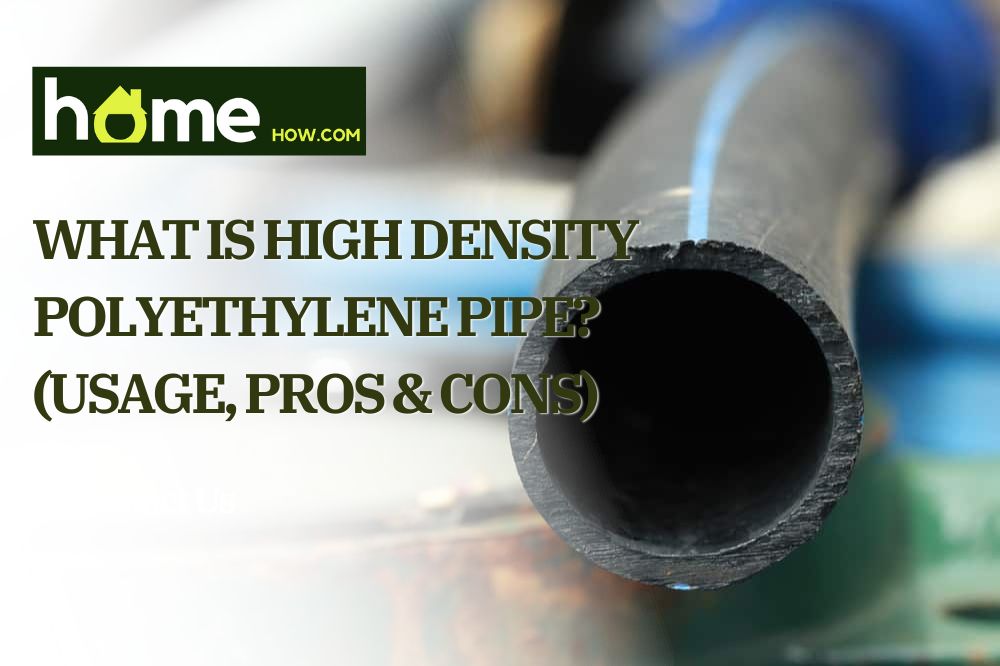A high density polyethylene pipe – or an HDPE pipe – is a specific type of plastic pipe with incredible durability, flexibility, and multi-purpose application. What’s more, this type of piping has been used for decades worldwide for all types of tasks and purposes from gas transfer to sewers, drainage, water infrastructure, and more.
So, below we’ve compiled the main points you need to know about what a high density polyethylene pipe is, how it’s used, and what are its exact pros and cons.
What is high density polyethylene pipe or HDPE pipe?
A high density polyethylene pipe is a type of high quality plastic pipe that can be used for almost any type of liquid or gas. HDPE pipes are a type of PE (polyethylene) pipe in that it’s made of petroleum, like any other plastic. The polymers of HDPE pipes are, as the name suggests, of a much higher density, however, which makes them ideal for many industrial uses a normal PE pipe wouldn’t work for.
This isn’t to say that the high density polyethylene material is only good for piping, of course. This type of plastic has been used for anything from toys, high quality drinking bottles, or sports equipment to insulation and piping. Let’s look at the latter in a bit more detail below.
What are HDPE pipes used for?
HDPE pipes have been a mainstay in most industrial construction and infrastructure areas for decades alongside steel, concrete, and PVC pipes. Today, a high density polyethylene pipe can be used for anything such as potable water mains, gas mains, fire system supply lines, rural irrigation, communication and other electrical conduits, drainage and storm water pipes, sewer mains, transfer lines, and more.
Such uses for HDPE pipes can be found both in industrial and residential areas with homeowners free to install them in their homes for any of their gas, water, sewer, and other such needs.
This versatility of high density polyethylene pipes is due to the very specific mix of properties and advantages they come with. However, it’s still important to keep in mind the few key specifics or drawbacks these pipes also have.
What are the advantages and disadvantages of HDPE pipes?
Given what HDPE pipes are, some of their pros and cons are obvious at a glance. For example, because of their high density, they are much more durable than other PE pipes as well as all common PVC pipes. This makes a high density polyethylene pipe usable in much more cases and scenarios than those pipes.
At the same time, as a type of polyethylene pipe, the HDPE does offer more flexibility than the common steel or concrete pipes, it’s more lightweight and easier to transport, its installation is much simpler, and so on.

All that comes with a few disadvantages too, such as lower temperature tolerance compared to steel and concrete pipes, lower strength, and so on. So, let’s go over each point below.
Pros:
- HDPE pipes have a high resistance to most detrimental effects such as corrosion, deposits, tuberculation, etc. Chemical resistance and corrosion resistance are especially big advantages for this type of piping as other PE and PVC piping materials have certain limitations when it comes to corrosion and chemical resistance.
- HDPE pipes are much more lightweight and easier to transport. This is an obvious advantage in terms of cost-effective logistics, especially when it comes to larger quantities, lengths, and diameters of pipes.
- A high density polyethylene pipe allows for faster installations. This is thanks to the lightweight nature of HDPE pipes, even when they are of a longer length compared to concrete and steel pipes. That’s great both for residential use where the logistic capabilities of the user are often limited and for industrial use where large quantities of piping are often necessary.
- Greater freeze-break resistance compared to steel and concrete alternatives. This is an area where HDPE pipes shine especially bright as the HDPE material can stay perfectly ductile even in sub-zero temperatures and even with water repeatedly freezing, thawing, and re-freezing inside the type.
The same can’t be said about more rigid pipe materials such as concrete and steel as they can suffer permanent damage due to freezing in particularly low temperatures, especially over time. This makes HDPE ideal for alpine areas.
- HDPE pipes have a much lower scrap value and therefore lead to much fewer Jobsite theft. While there are certain steps you can take to prevent jobsite theft, using equipment and materials with a lower scrap value is key.
- HDPE pipes are also recyclable and eco-friendly. This runs contrary to many people’s conventional wisdom. Yet, even though it is true that the process of producing HDPE pipes isn’t all that eco-friendly, the pipes themselves are 100% recyclable.
- There is a wide range of joining and fitting options that don’t require flame for joining. This is thanks to the fact that high density polyethylene pipes have been in wide use for decades and aren’t at all a newcomer to the industrial scene.
- HDPE pipes offer excellent safety for drinkable water in both the short and long term. It’s intuitive for people to distrust plastic materials regarding drinking water and foods but HDPEs have been widely recognized as safe for use with drinking water, especially when it comes to cold and moderate temperature water.
HDPE pipes have also been approved for use with hot drinking water in Europe for a while although similar approvals aren’t as common in the United States as of yet.
- A high density polyethylene pipe has more than enough durability to withstand the installation process and prolonged use. The exact type of HDPE matters, of course, depending on the hydrostatic design stress of the HDPE material.

This is largely – albeit not exclusively – determined by how much the plastic polymer has been pressurized during its manufacturing. That’s typically signified by the number on the pipe’s name such as PE63, PE80, PE100, or other, pointing at the number of polymerization molecules by ethylenes in the polymer.
- As they can be heat-fused, HDPE pipes are virtually 100% leak-proof, thus avoiding a common problem in the joints of steel and concrete pipes.
- A standard high density polyethylene pipe is also UV-resistant and can spend decades above ground with no UV damage on the pipe.
Cons:
- HDPE pipes have poor weathering resistance compared to concrete and steel pipes. This con can be contentions to some as HDPE pipes are much more weather-resistant than other PE and PVC pipes but they are still not on the level of concrete and steel when extreme weather conditions are concerned.
- A high rate of thermal expansion compared to other materials. The precise rate of thermal expansion of HDPE pipes is calculated as thus – 8.0 x 10-5 in/in/°F. This translates to about 1 inch of expansion for every 10° Fahrenheit change in temperature for every 100 feet of pipe length. This expansion rate is about 4.5 to 5 times greater than that of steel and iron pipes.
It is worth noting that this greater rate of thermal expansion is not seen as a major drawback in most situations and expert technicians know when and how to work around it. Still, it is a con that should be mentioned.

- Bonding a high density polyethylene pipe is more difficult and time-consuming. This is despite the relative ease of HDPE pipe installations and stems from the fact that HDPE is a type of plastic with very high abrasion resistance – i.e., it’s very difficult to glue.
- HDPE pipes are susceptible to stress cracking. That’s due to the high density of this PE material – it makes it resistant to high tensile stress as the HDPE can stretch and yield, but it can experience brittle failure under low tensile stress.
- Lower strength or stiffness overall – this con is self-explanatory as even though HDPE is much stronger than other PE materials, it can’t match the strength of concrete and steel pipes.
- HDPE pipes are flammable under certain conditions. This isn’t to say that they are easily flammable – they aren’t – but in a comparison with high quality steel and concrete pipes, any HDPE will technically be more easily flammable as it has an auto-ignition temperature of ~300o Celsius (572o F).
In conclusion – what is a high density polyethylene pipe and should you use it at home?
HDPE pipes are a type of PE pipe that’s made from thermoplastic high density polyethylene so that it’s more durable and long-lasting under various conditions. This makes HDPE pipes excellent for many different tasks both in residential homes and for large-scale infrastructure.
Whether you’re looking for a water pipe, wastewater sewer pipe, industrial pipe for gases and chemicals, or for almost any other type of fluids or gases, a high density polyethylene pipe likely is the way to go.
